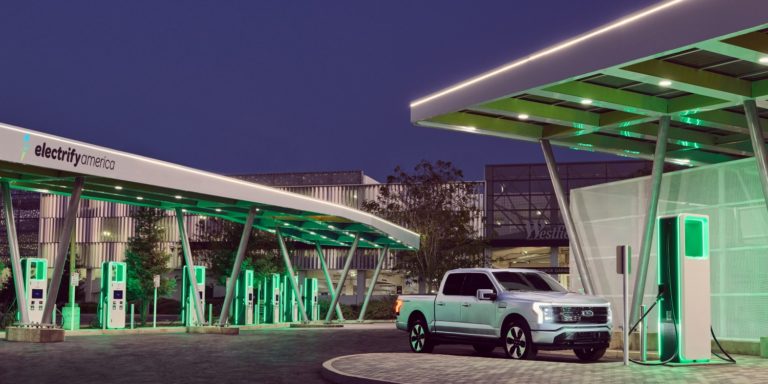
The US Environmental Protection Agency (EPA) has proposed far-reaching emission reductions for new passenger cars and commercial vehicles. Specifically, car emissions are to be reduced by 56 per cent by 2032 – which could probably only be achieved with significantly more electric vehicles.
According to various US media reports, the agency itself assumes that in ten years two out of three new cars in the USA will be purely electrically powered. As Reuters writes, the proposal, if adopted later, “represents the most aggressive US vehicle emissions reduction plan to date, requiring 13% annual average pollution cuts”.
According to the reports, the EPA estimates that it would cost about $1,200 more per vehicle to meet the proposed targets. For customers, it is expected to be cheaper overall, despite the higher initial cost, saving an average of more than $9,000 in fuel, maintenance and repair costs over an eight-year period. Extrapolating to fleet targets, the rules for model years 2027-2032 are expected to save more than nine billion tonnes of CO2 during their use into 2055.
“These standards are very ambitious and follow the sense of urgency that the president and this administration have in addressing the climate crisis,” EPA Administrator Michael Regan told Reuters. But he would not commit to a date for an internal combustion vehicle phase-out. The proposal is a “performance-based standard” and not an EV mandate, he said.
While the EPA does not set annual sales quotas, under the Clean Air Act it can limit the pollution created by the total number of cars a manufacturer sells. The EPA can set this limit so that it can only be achieved with a certain percentage of zero-emission vehicles.
From these pollution standards and the known emissions of today’s vehicles, the EPA itself derives how many electric vehicles would be necessary to meet the targets. For 2030, the EPA itself assumes that carmakers will have to achieve 60 per cent of their sales with electric cars; in 2032, the figure should be 67 per cent. By comparison, in 2022, 5.8 per cent of all 13.8 million new cars in the US were purely electric.
Initial reactions to the proposal are mixed. Dan Becker, director of the Safe Climate Transport Campaign, even called for stricter targets. However, the EPA proposal even goes beyond US President Joe Biden’s goal (supported by most car manufacturers) of 50 per cent electric cars by 2030. John Bozzella, CEO of the Alliance for Automotive Innovation, which represents GM, Toyota and Volkswagen, among others, was correspondingly cautious. “A lot has to go right for this massive – and unprecedented – change in our automotive market and industrial base to succeed,” Bozzella is quoted as saying. “Factors outside the vehicle, like charging infrastructure, supply chains, grid resiliency, the availability of low carbon fuels and critical minerals will determine whether EPA standards at these levels are achievable.”
In addition, the EPA has also put forward proposals for commercial vehicles. According to the proposal, 50 per cent of buses and refuse collection vehicles are to be electric by 2032. For short-haul tractors, the quota is to be 35 per cent, and for long-haul trucks 25 per cent.